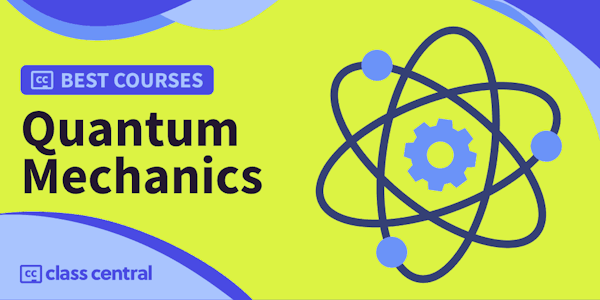Quantum computing exploits the quantum mechanical nature of matter to simultaneously exist in multiple possible states. Building upon the digital binary logic of bits, quantum computing is built on the basis of interacting two-level quantum systems or ‘qubits’ that follow the laws of quantum mechanics. The addressability of the quantum system and its fragility to fidelity are the major issues of concern, which if addressed appropriately, will enable this new approach to revolutionize the present form of computing. After developing the basics, this course delves into various implementation aspects of quantum computing and quantum information processing.
Overview
Syllabus
Introduction : Motivation & Overview.
Introduction : Technical Details.
Introduction : Basic tools.
Computational Tools.
Quantum Teleportation and Cryptography.
Quantum Measurement and Teleportation.
DJ Algorithm and Implementation Aspects.
Grover's Algorithm.
Basics of Shor's Algorithm.
Shor's Algorithm and Quantum Fourier Transform(QFT).
Basics of Quantum Mechanics.
Modern look at Quantum Mechanics.
Basics of NMR.
Concepts in NMR Quantum Computing.
Laser Basics.
lecture 16 - Continuous Wave Lasers.
Pulsed Lasers.
Optical Implementation 'Linear Approach'.
Various Aspects of Linear Optical Quantum Computing.
Laser Experimental Implementation for Grover's Algorithm.
Optical Implementation.
Solutions to problem set - 1.
Basics of Ion Traps.
Applications of Ion Traps in " QIQC ".
Reviewing Concepts and clarifying problems - 1.
Reviewing Concepts and clarifying problems - 2.
Lecture 27 : Qubits used in Commercial Quantum Computing.
Lecture 28 : Spintronics Quantum Computing.
Back to Basics-I.
Back to Basics-II.
Understanding Implementation Issues from the Basics-I.
Understanding Implementation Issues from the Basics-II.
Implementation with Solid-State Super conducting Qubits.
Concept of Density Matrix for Quantum Computing.
Understanding the ensemble of Qubits from Density Matrix.
Understanding Quantum Measurement , Entanglement etc. in Quantum Computing using Density Matrix.
Principles: Quantum Mechanics and Computers.
Measurements: Single vs Ensemble Averaged.
Working of Quantum Computers: NMR QC.
Academic Development in Quantum Computing - I.
Academic Development in Quantum Computing - II.
Commercial Development in Quantum Computing Implementation.
Use of Atomic Quibts in Quantum Computing.
Futuristic Aspects in Implementing Quantum Computing - I.
Futuristic Aspects in Implementing Quantum Computing - II.
Taught by
Quantum Computing
Tags
Reviews
2.0 rating, based on 1 Class Central review
-
Overall, I found the quantum computing course to be quite insightful and engaging. The course did an excellent job of introducing the fundamental concepts and principles of quantum computing, making it accessible to students with varying levels of prior knowledge.
One of the course's strengths was its structured approach to presenting complex topics. The material was well-organized, starting with the basics of quantum mechanics and gradually building up to more advanced quantum computing concepts. This progression allowed for a smooth transition and a deeper understanding of the subject matter.



